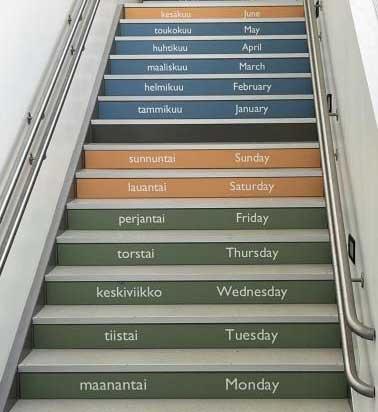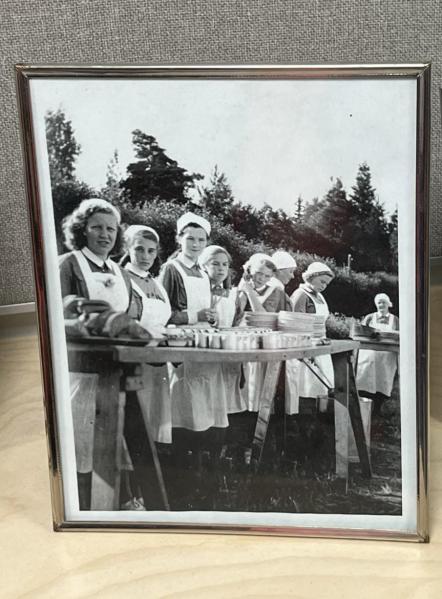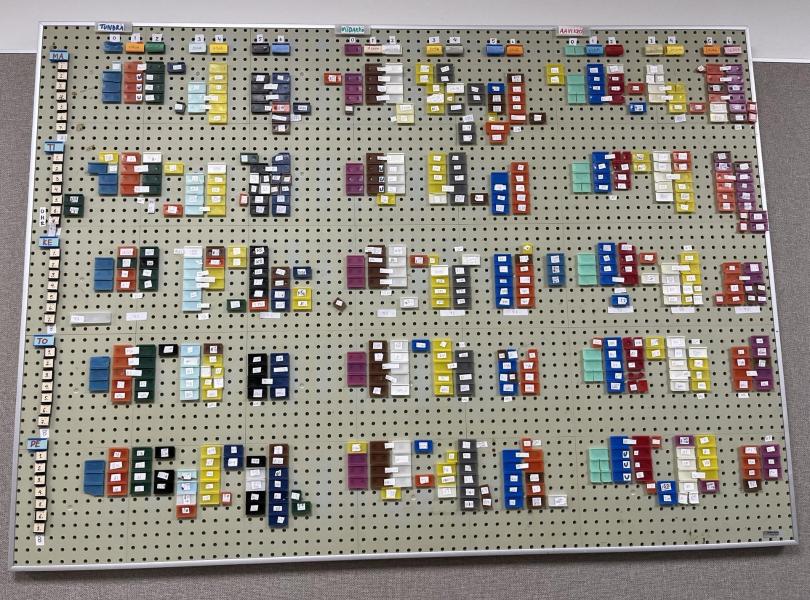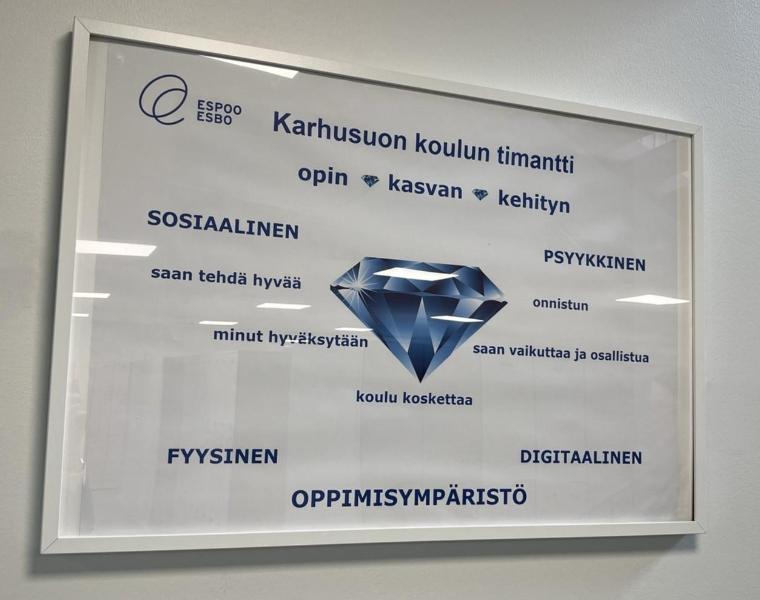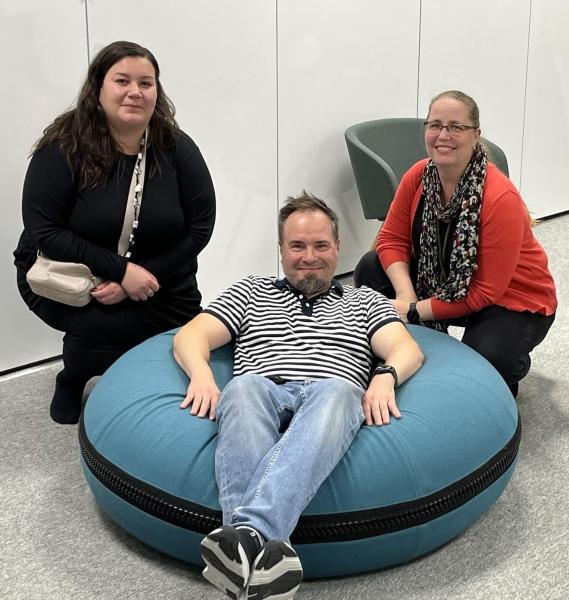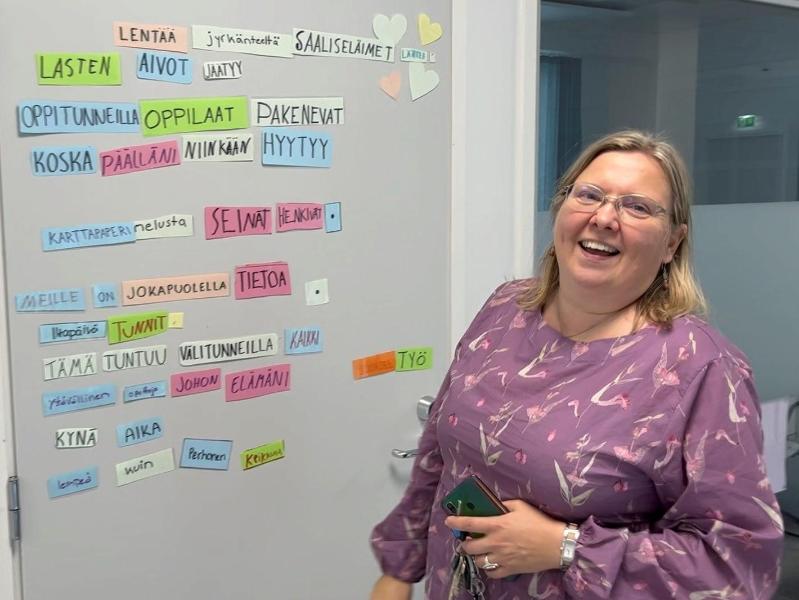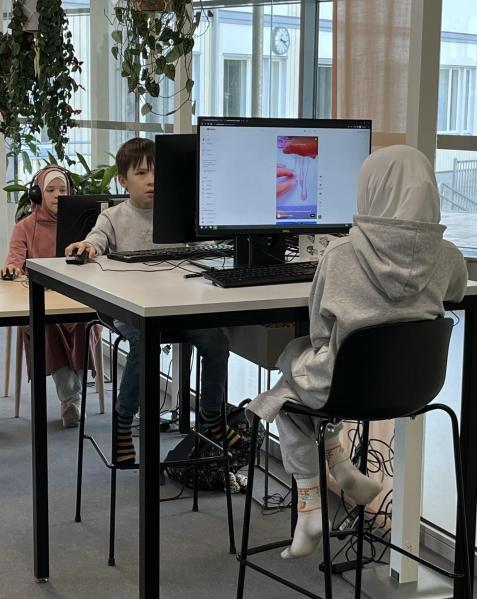It’s been raining off and on all morning in Järvenpää, a small city north of Helsinki. The streets are wet and the sidewalks muddy, but the floors in Harjula School’s entrance are gleaming.
The entrance is filled with hooks and cubby holes where schoolchildren hang their coats and take off their shoes. Students and teachers walk around in stockinged feet or in “house shoes,” slippers to keep the muck out when the weather is bad.
Down the hall from the entry, the building opens up to a bright atrium with tables and chairs, which also serves as a cafeteria. Floor to ceiling windows let the light pour in even on a gloomy day and provide a view onto the outside play area, a huge pine tree (which is decorated at Christmas) and a neighbouring residential area, with brick houses and bright, almost fluorescent green lawns.
At the back of the atrium is a raised stage, blocked off by a retractable wall that opens to a larger, space used for big gatherings, sports events and theatre productions. Throughout the building, thick, accordion-style walls can be opened or closed to enable teachers and children to come together in big groups, or be whittled down into smaller, more intimate gatherings. It’s a kaleidoscope of spaces that twist and turn as needs change.
The innovatively designed school is the brainchild of Tarja Edry, the principal of Harjula School, and Jan Mikkonen, pedagogical facility development manager for Järvenpää. In many ways, Harjula’s design represents the next step in Finnish education, a country already known for cutting-edge, highly effective schooling. “We had a vision, together with Tarja, about what we planned to do,” Mikkonen says.
That vision was to deconstruct the traditional school, with its long hallways and closed classrooms, and rebuild it as a more open, more flexible space that could support different kinds of instruction, such as team teaching, where instructors work in groups or share classes, collaborative projects that encourage students to communicate and solve problems together and creative exercises that let children express their own personalities and talents.
Because all the rooms are multifunctional, teachers move from one area to another or share classrooms with another teacher. They no longer have dedicated classrooms. Edry hoped that changing the space would push teachers out of their comfort zones and force them to rethink how children learned.
The somewhat radical approach caused conflict, however. Some teachers left. “Those who didn’t want to stay started searching for another school, because they didn’t want to change their pedagogy,” she says. The old school building was more traditional, with classrooms for each teacher. The new building is “totally different,” she says. “Everybody had to get used to it.”
